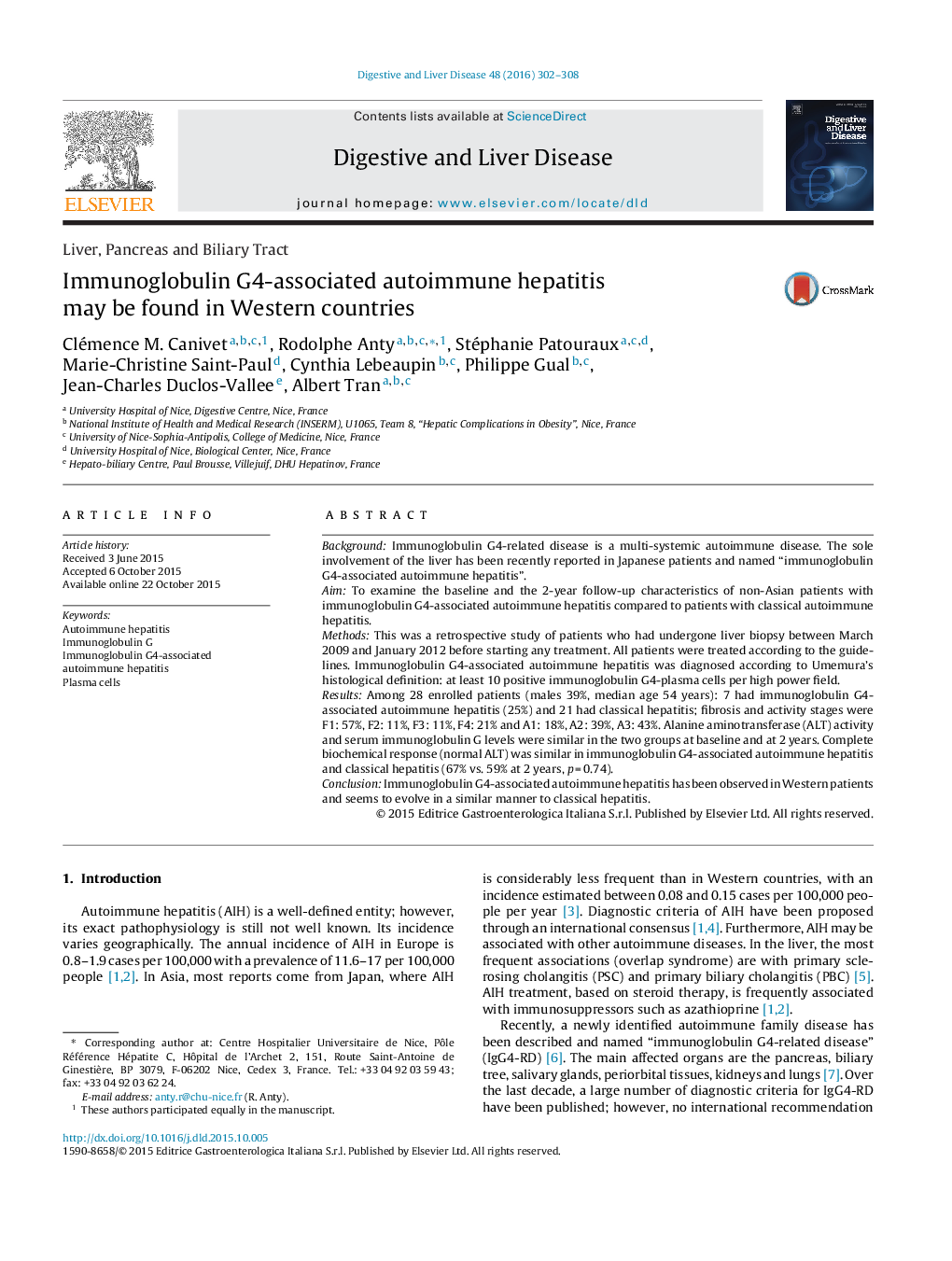| کد مقاله | کد نشریه | سال انتشار | مقاله انگلیسی | نسخه تمام متن |
|---|---|---|---|---|
| 6087996 | 1207683 | 2016 | 7 صفحه PDF | دانلود رایگان |

BackgroundImmunoglobulin G4-related disease is a multi-systemic autoimmune disease. The sole involvement of the liver has been recently reported in Japanese patients and named “immunoglobulin G4-associated autoimmune hepatitis”.AimTo examine the baseline and the 2-year follow-up characteristics of non-Asian patients with immunoglobulin G4-associated autoimmune hepatitis compared to patients with classical autoimmune hepatitis.MethodsThis was a retrospective study of patients who had undergone liver biopsy between March 2009 and January 2012 before starting any treatment. All patients were treated according to the guidelines. Immunoglobulin G4-associated autoimmune hepatitis was diagnosed according to Umemura's histological definition: at least 10 positive immunoglobulin G4-plasma cells per high power field.ResultsAmong 28 enrolled patients (males 39%, median age 54 years): 7 had immunoglobulin G4-associated autoimmune hepatitis (25%) and 21 had classical hepatitis; fibrosis and activity stages were F1: 57%, F2: 11%, F3: 11%, F4: 21% and A1: 18%, A2: 39%, A3: 43%. Alanine aminotransferase (ALT) activity and serum immunoglobulin G levels were similar in the two groups at baseline and at 2 years. Complete biochemical response (normal ALT) was similar in immunoglobulin G4-associated autoimmune hepatitis and classical hepatitis (67% vs. 59% at 2 years, p = 0.74).ConclusionImmunoglobulin G4-associated autoimmune hepatitis has been observed in Western patients and seems to evolve in a similar manner to classical hepatitis.
Journal: Digestive and Liver Disease - Volume 48, Issue 3, March 2016, Pages 302-308